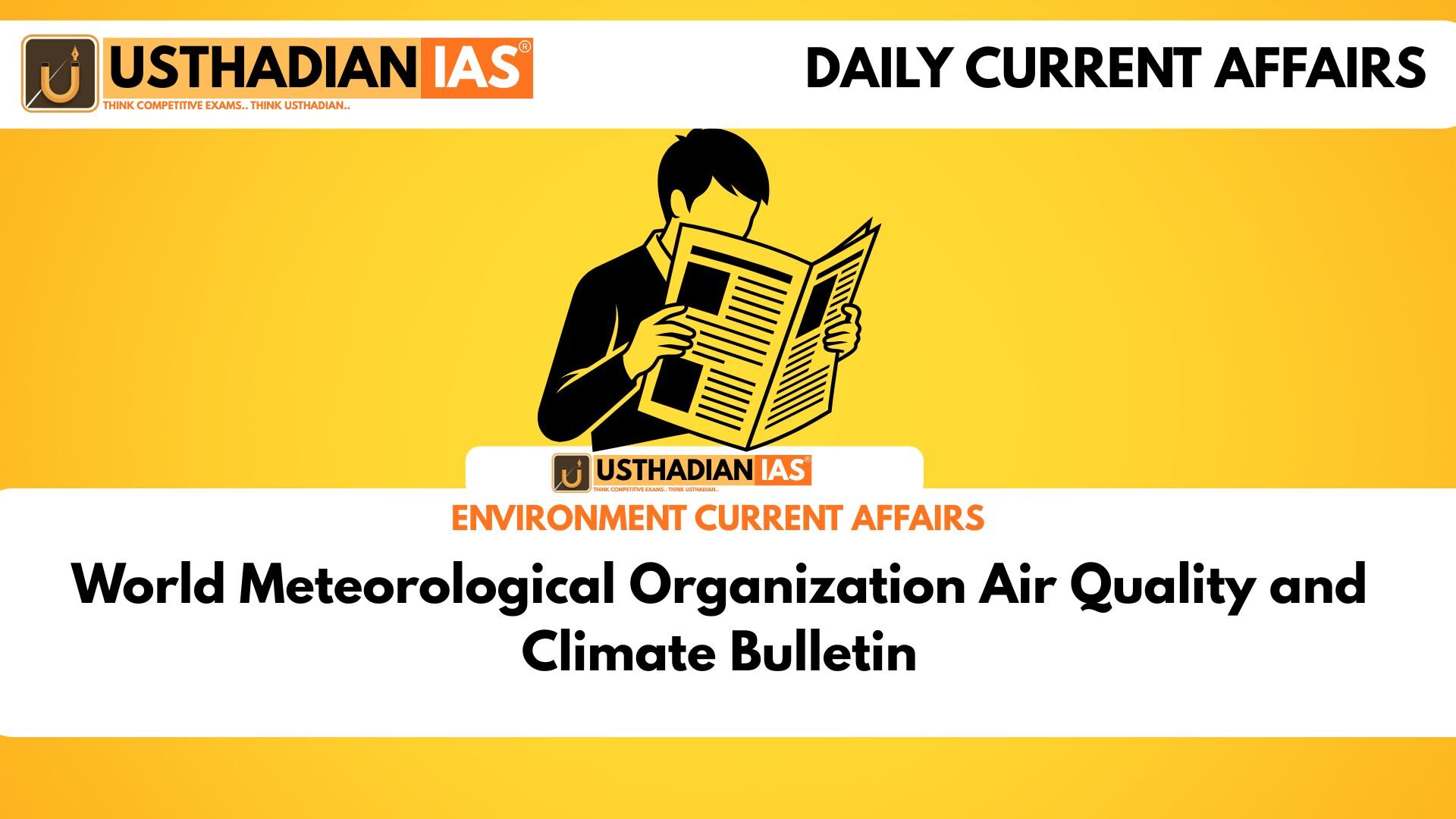WMO and its global role
World Meteorological Organization Air Quality and Climate Bulletin: The World Meteorological Organization (WMO), a specialized United Nations agency, recently released its latest Air Quality and Climate Bulletin. The report highlights the deep link between climate change and air quality, showing how both affect ecosystems, human health, and economies.
Static GK fact: WMO was established in 1950 with its headquarters in Geneva, Switzerland.
PM2.5 and global health risk
The bulletin identifies PM2.5 pollution as a critical health threat, responsible for millions of premature deaths annually. While levels have dropped in North America, Europe, and East Asia due to strict regulations, South Asia and higher latitudes continue to face severe challenges due to wildfires and industrial growth.
Static GK fact: PM2.5 refers to particulate matter with a diameter of less than 2.5 micrometers, small enough to enter human lungs and bloodstream.
Impact of shipping emission regulations
The bulletin discusses the role of MARPOL VI, which reduced sulfur levels in marine fuels. This improved public health but slightly increased global warming, as fewer sulfate aerosols now reflect solar radiation.
Static GK Tip: MARPOL is an international convention adopted by the International Maritime Organization (IMO) to prevent marine pollution.
Climate and air quality interactions
Pollutants such as ground-level ozone contribute to atmospheric warming. On the other hand, climate change itself worsens air pollution by altering chemical reactions, biogenic emissions, and human activities. This two-way interaction shows why a combined policy approach is crucial.
Role of aerosols
The report underlines that aerosols play opposite roles. Dark aerosols like black carbon absorb solar radiation, causing warming. In contrast, bright aerosols like sulfates reflect sunlight, producing temporary cooling.
Static GK fact: Black carbon is a major component of soot, emitted from incomplete combustion in vehicles, industries, and household fuels.
Winter fog crisis in North India
The Indo-Gangetic Plain (IGP) faces worsening winter fog linked with rising pollution levels. Fog forms when moisture condenses on PM2.5 particles, which act as fog condensation nuclei (FCN). Temperature inversions trap pollutants, prolonging the fog. Urbanization, brick kilns, and ammonium emissions make the issue more severe.
This has direct consequences on transport systems, causing delays, and raises health risks, including asthma and respiratory issues. Toxic compounds in fog water further intensify the health burden.
WMO membership and monitoring programmes
The WMO has 187 Member States and 6 Member Territories, including India. Its Global Atmosphere Watch (GAW) Programme coordinates worldwide monitoring of the atmosphere, providing vital data for research and policymaking.
Static GK fact: India is an active member of WMO and participates in global climate and air quality monitoring initiatives.
Static Usthadian Current Affairs Table
World Meteorological Organization Air Quality and Climate Bulletin:
| Topic | Detail |
| Establishment of WMO | 1950 |
| WMO Headquarters | Geneva, Switzerland |
| WMO Members | 187 States and 6 Territories |
| Bulletin Released | Air Quality and Climate Bulletin |
| Key Health Concern | PM2.5 pollution causing premature deaths |
| Shipping Regulation | MARPOL VI curbed sulfur in marine fuels |
| Aerosol Types | Black carbon (warming), sulfates (cooling) |
| South Asia Concern | High PM2.5 and winter fog in IGP |
| Programme Mentioned | Global Atmosphere Watch (GAW) |
| India’s Status | Active WMO member |








